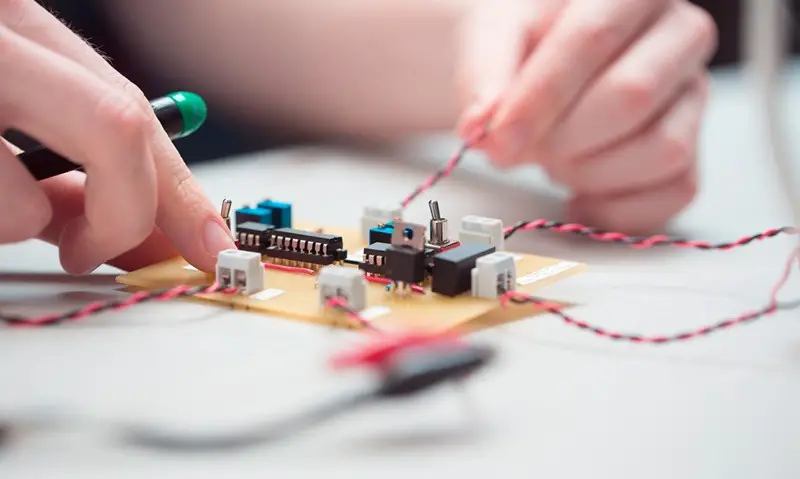Learning to work on electronics is a great skill to acquire. Not only will it allow you to do things like repair your own computer problems but you can also learn to make some fun gadgets and tools. Working with electronics is fairly easy once you understand the basics and then an entirely new world of possibilities opens up to you. Below is a simple guide you can follow to get started working with electronics. Follow these steps and before you know it you’ll be working on new electronics projects whenever you get the chance.

Start with the Basics
The first thing you’ll want to do is read up a little bit about how electronics work. The basic components you should know about are a closed loop, voltage, current and resistance. These 4 things are essential in most electronics, so learning them will give you a big head start. You can learn about them either by reading some online guides or watching a few introductory YouTube videos. Take some time to write down the definition for each, so that you can return to it if you forget which is which.
Learn to Read a Circuit Diagram
A key part of learning how to build and repair circuits is learning how to read a circuit diagram. A circuit diagram is a simple drawing that depicts each part of a closed circuit. You can read the diagram to understand how the circuit works or how you can build your own. Different symbols represent different parts of the circuit, so you’ll want to learn what each one means.
A good place to start is by finding some simple circuit diagrams online and studying them. Look for ones that are labeled fully so that you can see where each part goes. As you get better, you’ll be able to understand more complex circuit drawings or even draw some for yourself.
Build Some Simple Circuits
Now that you have an understanding of the basic parts of a circuit and how circuit drawings work, you can start building some simple circuits on your own. The hands-on approach is a great way to learn how to work with electronics, so you might as well dive right in. To start, you should find a simple circuit diagram online that you would like to try to build. Choose something that sticks with the basic components you are familiar with already.
Once you have found a diagram, start gathering your parts. You’ll likely need some combination of resistors, capacitors, transistors, dip switches and LED lights. When ordering parts, make sure the ones you are getting exactly match the kind your circuit diagram calls for. You may also need to get some wires and alligator clips to complete your circuit.
When all your parts have arrived, assemble the parts according to the circuit diagram. If you’re unsure of exactly what to do, look for some video tutorials online that will walk you through the process. For a simple circuit, it’s most likely a matter of just twisting a few wires together and clamping it to a power source, like a battery. If you connect everything correctly, you should be able to tell that your circuit works.
Learn to Solder
A big part of more advanced electronics projects is soldering. Soldering is when you melt a small piece of metal onto your project to connect two things together. For example, you may solder a wire to a resistor or battery source. The purpose is to keep the connection in place so that you don’t have to hold it there for the connection to work.
Soldering is fairly easy to get the hang of, but it will take some practice. Get yourself a soldering kit, which comes with the soldering iron and some solder. Follow guides online, paying extra attention to the safety precautions as the iron can get very hot. Once you have a good idea as to how it works, try using it on one of your circuits.
Pick a Project that Interests You
Finally, find a more complex project that interests you. Find something that you would like to build that you can learn from along the way. The best way to learn about electronics is often just trying new things and learning as you go. As long as you take the necessary safety precautions, and have a good handle on the basics, you should be able to build anything you put your mind to. Hopefully, this guide will get you started in the right direction and before long you’ll have a new favorite hobby – working with electronics.
[Image via: Google Images]
